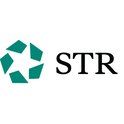STR: Middle East and Africa hotel performance for January 2017
LONDON – Hotels in the Middle East reported declines across the three key performance indicators, while hotels in Africa recorded positive results, according to January 2017 data from STR.
U.S. dollar constant currency, year-over-year comparisons:
Middle East:
- Occupancy: -2.7% to 68.4%
- Average daily rate (ADR): -8.4% to USD 177.81
- Revenue per available room (RevPAR): -11.0% to USD 121.62
Africa:
- Occupancy: +4.5% to 50.6%
- ADR: +12.5% to US$118.16
- RevPAR: +17.5% to US$59.76
Local currency, year-over-year comparisons:
Egypt
- Occupancy: +24.3% to 47.5%
- ADR: +92.9% to EGP1,276.25
- RevPAR: +139.8% to EGP606.79
While Egypt's performance represented significant improvement in local currency, STR analysts note that the devaluation of the Egyptian pound has significantly inflated ADR figures. When reported in U.S. dollars, ADR decreased 19.1%.
January did, however, result in an improvement in occupancy from the very low levels of the last 15 months. STR analysts believe that year-over-year results show some recovery from the air crash in the Sinai Peninsula in late 2015, but ongoing security concerns are still weighing on actual performance levels. Demand for the country increased 24.8% during the month, which is noteworthy considering demand was down 15.3% for total-year 2016. At the market level, Cairo hotels posted a 20.6% increase in occupancy to 68.6% for the month, while Sharm El Sheikh's occupancy rose 26.2% to 29.9%.
Mauritius
- Occupancy: +4.1% to 83.8%
- ADR: +8.1% to MUR9,225.28
- RevPAR: +12.5% to MUR7,726.48
The country has recorded year-over-year increases in occupancy for four Januarys in a row, and the 83.8% actual level marked the highest for the month since 2007. Additionally, even in comparison with a strong first month of 2016, Mauritius still posted impressive ADR growth. On both New Year's Day and Chinese New Year (28 January), Mauritius' occupancy levels exceeded 90.0%. STR analysts note that the country is a major destination for Chinese tourists.
United Arab Emirates
- Occupancy: +0.5% to 81.1%
- ADR: -8.0% to AED711.80
- RevPAR: -7.5% to AED577.09
Demand (+5.8% in January) has outpaced supply (+5.3% in January) in the Emirates each month since November 2016, leading to moderate occupancy growth. Most of the occupancy growth for January occurred in smaller markets like Fujairah (+7.2%), Ras al-Khaimah (+10.1%) and Sharjah (+5.5%). Abu Dhabi reported a 1.5% decline, and Dubai posted nearly flat performance. Jumeirah Palm & Beaches, a submarket within Dubai, posted the highest occupancy growth (+5.8%), although ADR declined marginally (-0.2%). As a result of strong supply growth, especially in the Midscale segment, ADR declined across most Emirates markets in January.
About STR
STR provides premium data benchmarking, analytics and marketplace insights for the global hospitality industry. Founded in 1985, STR maintains a presence in 15 countries with a corporate North American headquarters in Hendersonville, Tennessee, an international headquarters in London, and an Asia Pacific headquarters in Singapore. STR was acquired in October 2019 by CoStar Group, Inc. (NASDAQ: CSGP), the leading provider of commercial real estate information, analytics and online marketplaces. For more information, please visit str.com and costargroup.com.
Alex Anstett
Media & Communications Coordinator - STR
STR
